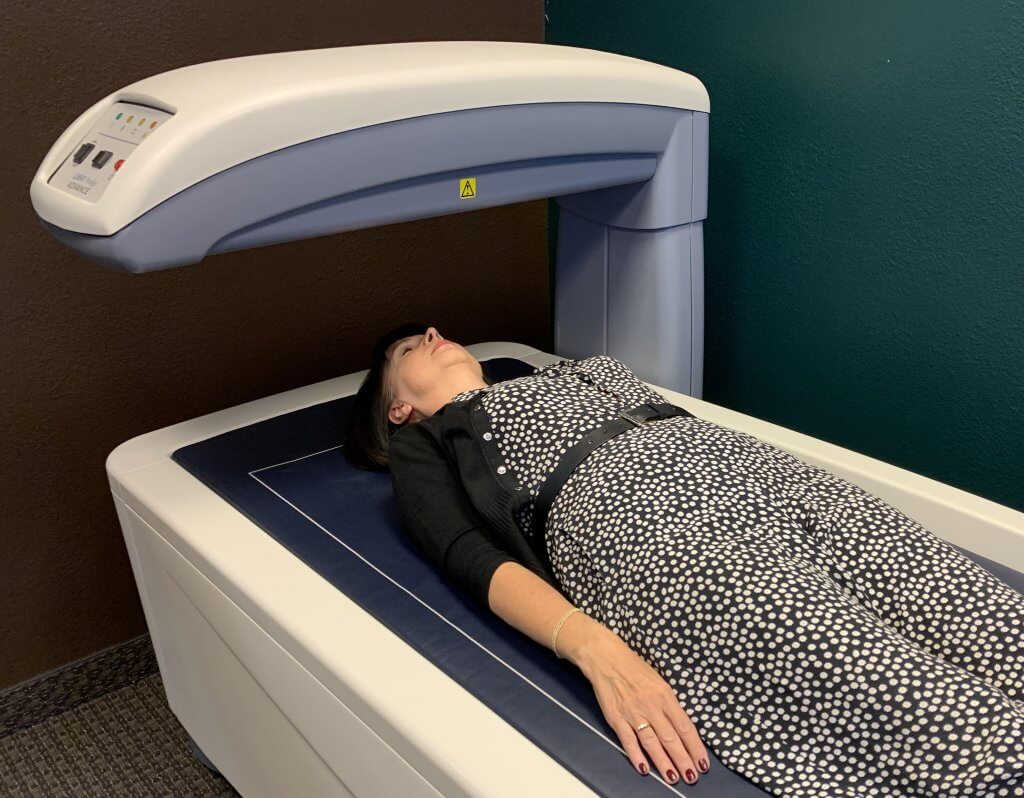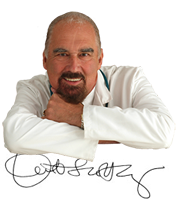Visiting the doctor these days can result in a whole slew of tests, over 90% of which are a waste of time. It’s overkill. But the doctor is either making money on a kick-back commissions for each test ordered. Or the doctor is practicing “defensive medicine”, meaning he or she is trying to cover their backside, in case they get sued, in which case he or she can say, “I did every reasonable test.”
The truth is, the common tests are usually a waste of time, because they don’t lead to any worthwhile treatment.
One of the big fashions, for example, is to measure cholesterol and tell you it’s “bad”. But the myth of cholesterol dangers has been disproven, over and over. TAKING STATINS IS A TOTAL WASTE OF YOUR MONEY. We want cholesterol UP, not down! Cholesterol is the precursor of all our good hormones: testosterone, estrogen, progesterone, adrenalin… Once over 65 years, those with the HIGHEST cholesterol levels live longer!1
So getting down cholesterol is not a worthwhile treatment. In which case, why measure it? Because the doctor is ignorant or undertrained, or both. Either way, this test has no scientific rationale.
Fasting blood sugar is another one. You can’t diagnose diabetes from a fasting blood sugar, so why bother? Again it’s ignorance, or “group thinking” (same as mob rule, in effect!)
Most doctors lay great store by the obesity measure called BMI (body mass index). But it’s nuts! Michael Jordan, the top US basketball athlete, was technically obese, according to his BMI. But in fact he was in superb physical shape, harder than a jungle animal, with not an ounce of excess fat anywhere on him. His bulk was actually solid muscle!

Michael Jordan at his peak
Gastroenterologists is a great money earner for GI surgeons. But is it worthwhile as a screen? Mammography certainly is NOT. Not only does it not save lives, as they claim; mammography is a serious radiation hazard (1 rad: equivalent to the woman being only a mile from ground zero when the atom bomb went off in Hiroshima!) Mammograms actually CAUSE breast cancer.2
Better Tests and Why
For this week’s newsletter, I am going to suggest some pretty hot tests that will lead to real clinical insights that could benefit you—even save your life! And I’ll explain why.
Let’s start with percentage body fat. That’s far more valuable than BMI. As I indicated, your bulk could be solid muscle, which is heavy. Fat is not.
It’s the accumulation of fat that is dangerous. So don’t bother with BMI but go for hip to waist ratio, or even better, height to weight ratio.
Body Fat Percentage
Your body fat percentage is not the same as BMI. This measurement is often used to assess whether you are gaining muscle or losing fat. The healthy ranges are different for men and women. There are a variety of ways to measure it, including using a body fat scale that uses bioelectrical impedance.3
Today you can weigh yourself on scales that give out a whole range of additional parameters. This can include percentage of body fat, percentage muscle and how much visceral fat (the dangerous stuff).
I have the Omron Body Composition Monitor in my bathroom. You can get one on eBay for about $75.
Alternatively, you can learn more about ways to measure body fat at this website: Best measures: https://www.verywellfit.com/best-body-fat-monitors-3435133
Thin Bones Lead To Fractures
It’s little known that fractures of the femur, in older women, cause more fatalities than breast cancer. You (men and women) need to know the state of your bones.
Risk factors for osteoporotic fractures include: a family history of osteoporosis, previous fractures, white race, dementia, poor nutrition, cigarette smoking, alcoholism, estrogen deficiency, early menopause (i.e., before age 45), long-term low calorie intake, history of falls, and inadequate physical activity, among other factors.
A DEXA scan is a high-precision type of X-ray that measures your bone mineral density and bone loss. If your bone density is lower than normal for your age, it indicates a risk for osteoporosis and bone fractures. DEXA stands for dual energy X-ray absorptiometry.
Guidelines from multiple organizations recommend beginning dual-energy x-ray absorptiometry (DEXA) screening for osteoporosis, starting at age 65 in women and men at age 70, with no significant risk factors.4
It’s very simple. You just lie on the bed and the machine passes over you a number of times. Here’s my wife Vivien having a DEXA Scan (well, just demonstrating!):

Simple and safe: the DEXA Scan
HOMA-IR (Homeostatic Model Assessment of Insulin Resistance)
First, you need to understand that insulin resistance is one of the most deadly medical conditions around. It not only means serious risk of overweight, obesity and diabetes. According to Dr. Graham Simpson, it dramatically increases the risk of heart attack and strokes, hypertension, metabolic syndrome, nonalcoholic fatty liver disease and polycystic ovary syndrome(PCOS). It will also make you much more likely to die of COVID-19. More than 50% of patients with COVID-19 who are technically obese (BMI >30) are admitted to the ICU.
Insulin resistance means, in effect, your body has too much sugar overload and is no longer helped by insulin. In a healthy person, insulin shunts blood glucose into the cells, where it provides energy. But in our modern diets, where ‘most everybody eats too much carbs (which gets turned into sugar), the insulin cannot get it down. Insulin levels rise but the glucose stays high in the blood.
Trouble is, insulin itself is deadly: it’s highly inflammatory and wrecks tissues and organs. So eating too much starch—and especially sugar—means your insulin is going to be too high. The high insulin does no good (hence insulin “resistance”). But it does a lot of damage, especially to the lining of your blood vessels.
It almost guarantees heart attacks and strokes!
That’s why a high fasting insulin has a very strong correlation with early death: insulin itself is gonna kill you, never mind the toxic blood glucose.
How do doctors treat this? EVEN MORE INSULIN! Even more damage to blood vessels and other organs. It makes no sense.
With That In Mind
OK, I haven’t room to give a whole lesson in glucose metabolism. But I hope by now that you are wary of insulin resistance and damage it causes. So is there a good test for insulin resistance?
There is and your doctor will likely not have heard of it, never mind use it and understand it.
Not hbA1C. It’s HOMA-IR, or Homeostatic Model Assessment of Insulin Resistance. We take samples for your fasting insulin level and your fasting blood glucose. They are joined by a simple formula, which gives a measure of insulin resistance:
HOMA-IR = fasting insulin level x fasting glucose level ÷ 405
For example:
- If you have a fasting insulin that is on the high side, like 10 uIU/mL
- and your fasting glucose was slightly high too, say 100 mg/dL
10 x 100 = 1000, divided by 405 = about 2.5 = early insulin resistance!
Ideally, you want a HOMA-IR of 1.9 or less. 1.2 or below is ideal. Levels of 2.0 and upwards, you are already in trouble.
Low HOMA-IR means that you are sensitive to insulin. A small amount of the hormone insulin is doing the trick to keep your blood sugars in good balance.
If you are above 2.0, your self-prescribed diet and fitness habits will bring your number down into the lower insulin-sensitive range.
Blood Sugar gets too much attention. As you can tell, metabolic health lies in space between the hormone insulin and your glucose sensitivity. Since high blood sugar gets all the press, what is the story behind low and high insulin?
With low insulin, you can readily break down fats that you have stored. In practice, we see low insulin with:
- people with inadequate caloric intake
- people who over-exercise/over-train without adequate time off to recover
- people who have chosen a low-carbohydrate and high fat diet.
High insulin: High insulin on a fasting blood test means you are in an anabolic state—effectively GETTING FAT! 5
If you want some help to arrange tests like these, email me (by replying to this email). I don’t do them but I know a lot of doctors who do!
To your longest stay on earth!

Prof. Keith Scott-Mumby
References:
1. Ravnskov, Uffe, et al. “Lack of an association or an inverse association between low-density-lipoprotein cholesterol and mortality in the elderly: a systematic review.” BMJ open 6.6 (2016): e010401.
2. J R Soc Med. 2015 Sep; 108(9): 341–345. Mammography screening is harmful and should be abandoned. Peter C Gøtzsche
3. Thomas E, Gupta PP, Fonarow GC, Horwich TB. Bioelectrical impedance analysis of body composition and survival in patients with heart failure. Clin Cardiol. 2019;42(1):129-135. doi:10.1002/clc.23118
4. https://www.aafp.org/family-physician/patient-care/clinical-recommendations/all-clinical-recommendations/cw-osteoporosis.html
5. Vogeser, M. Fasting serum insulin and the homeostasis model of insulin resistance (HOMA-IR) in the monitoring of lifestyle interventions in obese persons. Clinical Biochemistry (2007), vol. 40, issue 13/14:964–8.
